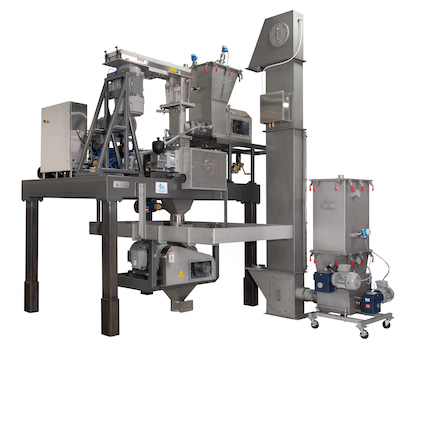 Slugging and roller compaction are both used in the industrial, pharmaceutical, & nutraceutical industry for granulation, but they differ in their processes and outcomes. While both slugging and roller compaction are methods of granulation in manufacturing, roller compaction is often favored for its efficiency, control over particle size, and suitability for continuous processing. The IPA Roller Compactor & Fitzpatrick Chilsonator are 2 desired compactors for the process.
Slugging and roller compaction are both used in the industrial, pharmaceutical, & nutraceutical industry for granulation, but they differ in their processes and outcomes. While both slugging and roller compaction are methods of granulation in manufacturing, roller compaction is often favored for its efficiency, control over particle size, and suitability for continuous processing. The IPA Roller Compactor & Fitzpatrick Chilsonator are 2 desired compactors for the process.
1. Process:
- Slugging: Slugging involves the direct compression of large tablets or slugs from a blend of powders using a tablet press. These slugs are milled into granules of the desired size.
- Roller Compaction: Roller compaction, as exemplified by the IPA Roller compactor & Fitzpatrick Chilsonator, utilizes a pair of counter-rotating rollers to compact powder into a ribbon-like sheet. This sheet is milled or granulated into the final product.
2. Particle Size and Uniformity:
- Slugging: The slugging process may result in variations in particle size and uniformity due to the variation in density within slugs. Next, the milling step is required to break down the slugs into granules.
- Roller Compaction: Roller compaction often produces more uniform granules directly, with controlled particle size distribution. The adjustable parameters in roller compaction allow for precise control over the final product characteristics.
3. Equipment Design:
- Slugging: The primary equipment for slugging is a tablet press, which compresses the powder blend into large slugs.
- Roller Compaction: Roller compaction involves specialized equipment like the IPA Roller compactor & Fitzpatrick Chilsonator, featuring a twin feed screw design, adjustable settings for pressure, speed, and roll gap.
4. Efficiency and Continuous Processing:
- Slugging: Slugging may involve a batch-wise process, and the milling step introduces an additional processing step.
- Roller Compaction: Roller compaction is often more efficient and conducive to continuous processing as the compactor, mill, and screener are incorporated into one operation. The compact design and adjustable parameters allow for faster and more controlled granulation.
